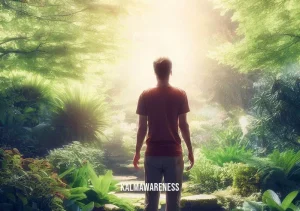Teaching Yoga Beyond the Poses: A Holistic Approach to Mindful Education
Teaching yoga goes far beyond instructing poses or asanas. It involves a holistic approach that embraces mindfulness, education, and a deep connection between the mind and body. In the first part of this comprehensive article, we’ll explore the foundation of teaching yoga beyond the poses, along with strategies and methodologies that can deepen the practice for both teacher and student.
The Essence of Teaching Yoga
Teaching yoga is more than the mastery of a physical discipline. As a teacher, you are not just leading a class; you’re guiding a journey into the self. Yoga, in its truest sense, is a transformative practice that connects us to our breath, body, and the present moment, a connection often lost in the hustle of our daily lives. When we dive into teaching yoga, we dive into a universe of self-awareness and mindful movement (mindful-movement-meditation).
Yoga: A Holistic Teaching Approach
“Yoga is not just repetition of few postures – it is more about the exploration and discovery of the subtle energies of life.” – Amit Ray
Teaching yoga beyond the poses embraces a holistic approach to wellness. This style of teaching incorporates yoga philosophy, breathwork, mindfulness, meditation, and personal development into the yoga class structure. By incorporating these elements, we help students delve deeper into their practice, beyond the physicality of the poses (yoga-for-flexible-mind-and-body).
- Yoga Philosophy: Yoga is not just about the physical body; it’s an ancient wisdom tradition with rich philosophical underpinnings. Introducing students to the philosophy of yoga provides a deeper understanding of the practice and its transformative potential.
- Breathwork (Pranayama): Pranayama, or breath control, is an essential part of any yoga practice. Teaching students to link their breath with movement can enhance their experience and bring a meditative quality to their practice.
- Mindfulness: Mindfulness is the act of being present, acknowledging our thoughts, feelings, and sensations without judgement. When integrated into yoga instruction, mindfulness can create a more aware and connected practice (meditation-and-its-practice).
- Meditation: Teaching meditation techniques during yoga classes can provide students with the tools they need to quiet their minds and connect more deeply with their inner selves (meditation-lesson-plan).
- Personal Development: Yoga has a unique way of revealing our patterns and habits. Encouraging personal growth through yoga can lead to profound transformations in students’ lives.
By incorporating these elements into your teaching, you can guide students towards a deeper, more enriching practice that transcends the physical poses.
We invite you to continue to the next part of the article where we will delve deeper into the strategies for teaching yoga beyond the poses, as well as the challenges and rewards that come with it. See you there!
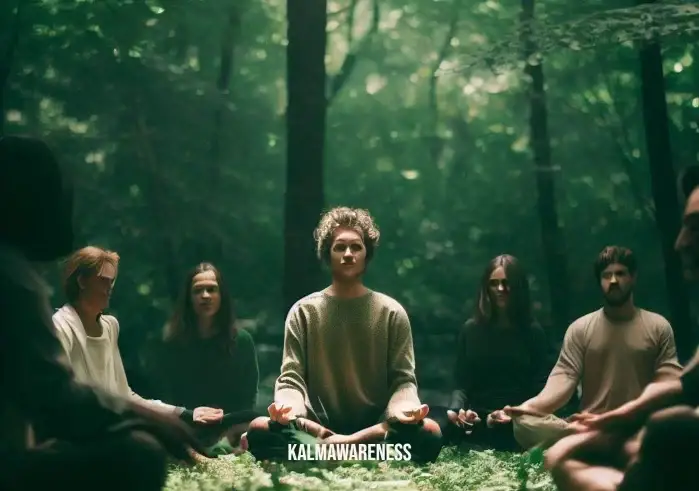
Strategies for Teaching Yoga Beyond the Poses
In the second part of this comprehensive guide on teaching yoga beyond the poses, we’ll provide insights into various strategies that can help you shape your unique teaching style. These approaches can help foster a deeper understanding and appreciation of yoga in your students, encouraging them to embrace the practice as more than a physical activity, but a holistic journey towards self-discovery.
Tailoring Yoga Instruction for Every Individual
The beauty of yoga lies in its adaptability. It’s essential for instructors to understand that every student comes to the mat with their unique set of physical and emotional conditions. By being mindful of this diversity, you can create a space where each student feels seen and supported (sofa-yoga-guide).
One way to achieve this is through modifications and use of props. From beginners to seasoned yogis, everyone can benefit from the use of props like yoga blocks, straps, and bolsters. Offering modifications for challenging poses will allow students of all levels to participate safely and effectively.
Integrating Mindfulness into the Practice
Mindfulness is an integral part of yoga. When instructing, encourage your students to focus on their breath and to be present with their movements. Teach them to be aware of the sensations in their body and to observe their thoughts without judgement. This mindfulness can transform a yoga class from a physical workout into a holistic practice, promoting relaxation and inner peace (mindful-movement-sleep-meditation).
Making Use of Yoga Philosophy
Bringing in elements of yoga philosophy can make the practice more meaningful for students. You might choose to talk about the yamas and niyamas, or ethical principles of yoga, or discuss the concept of non-attachment. Making yoga philosophy accessible and relevant can deepen students’ connection to the practice and facilitate personal growth (meditation-black-woman).
Encouraging a Home Practice
Empowering students to establish a regular home yoga practice can be hugely beneficial. Provide them with simple sequences, and encourage them to listen to their bodies and adjust their practice as needed. Practicing yoga at home fosters self-discipline, self-awareness, and independence, and allows students to connect with the practice on a deeper level (rodney-yees-daily-yoga).
In the table below, we outline these strategies for teaching yoga beyond the poses:
| Strategy | Description | Related Resource |
|---|---|---|
| Tailoring Instruction | Adjust the practice to meet individual needs | Sofa Yoga Guide |
| Integrating Mindfulness | Promote focus on breath and present moment | Mindful Movement Sleep Meditation |
| Utilizing Yoga Philosophy | Incorporate teachings from yoga philosophy | Meditation Black Woman |
| Encouraging Home Practice | Empower students to practice yoga regularly at home | Rodney Yee’s Daily Yoga |
In the upcoming section of the article, we will explore the rewards and challenges of teaching yoga beyond the poses. This includes the joys of witnessing student transformation, the struggles with burnout, and ways to maintain your own practice and wellbeing as a yoga teacher. Stay tuned!
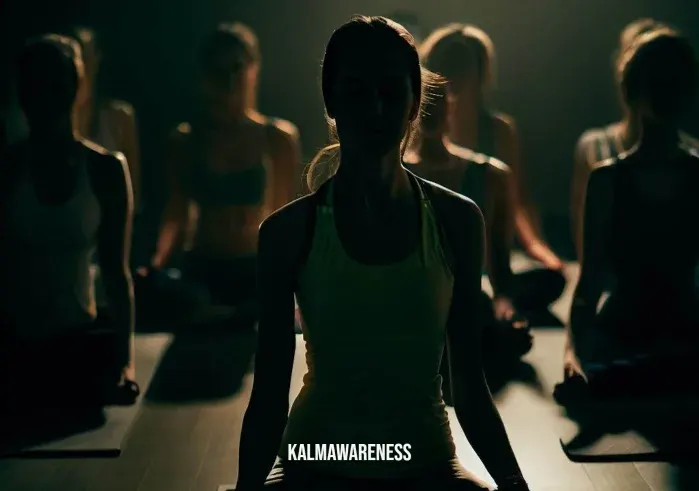
The Joys and Challenges of Teaching Yoga Beyond the Poses
In this third segment of our comprehensive guide, we journey into the heart of teaching yoga beyond the poses. Through exploring the highs and lows, the struggles and triumphs, we learn that the practice of yoga does not merely lie in its physicality, but in the transformative journey it cultivates.
The Rewards
Witnessing Transformation
As a yoga instructor, you have the privilege of observing the beautiful transformation in your students. Whether it’s witnessing the confidence that grows from mastering a new pose or the serenity that envelops a student after a guided meditation (meditation-lesson-plan), these moments are deeply rewarding. Yoga instructor B.K.S. Iyengar once said, “Yoga is a light, which once lit will never dim. The better your practice, the brighter your flame.”
Creating Community
Fostering a sense of community within your yoga class is a joyous part of teaching. By encouraging open conversation and shared experiences, you create an environment of mutual support and understanding (tactical-yoga-girl). As the ancient Sanskrit phrase ‘Sangha’ suggests, community is fundamental to the practice of yoga.
The Challenges
Teacher Burnout
Teaching yoga is physically and emotionally demanding. Between planning classes, dealing with diverse personalities, and maintaining your personal practice, burnout can be a real challenge (into-anguish). It’s essential to prioritize self-care and rest, remembering the wisdom in the words of Thich Nhat Hanh, “To be a good teacher, we must take care of ourselves.”
Maintaining Personal Practice
Striking a balance between your personal yoga journey and your teaching duties can be challenging. Maintaining your personal practice is essential for your growth as a teacher and for your wellbeing (mindful-movement-meditations). As Pattabhi Jois, the founder of Ashtanga Yoga, famously said, “Practice, and all is coming.”
In the next chapter of this article, we will delve into the ways in which you can overcome the challenges of teaching yoga beyond the poses. We’ll discuss strategies for self-care, techniques for maintaining personal practice amidst a busy teaching schedule, and explore the importance of continuous learning and professional development. Join us in the next part for more insights.
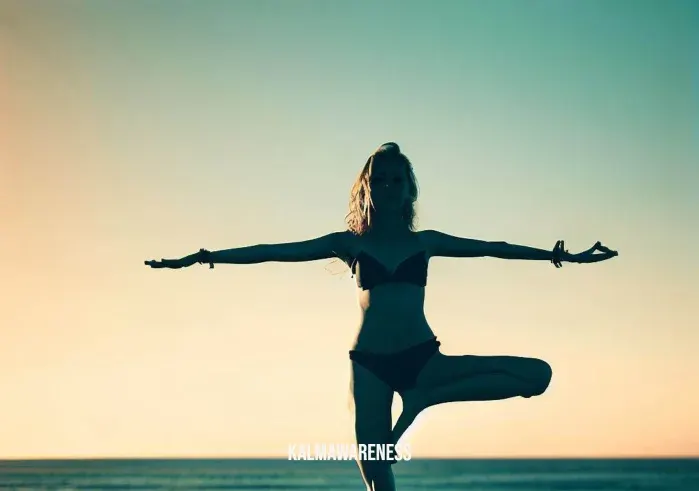
Strategies for Teaching Yoga Beyond the Poses
In this next part of our guide on teaching yoga beyond the poses, we’ll explore various strategies to tackle the challenges inherent in teaching yoga. From maintaining personal practice to ongoing professional development, this chapter is a treasure trove of actionable insights and inspiring quotes.
Maintaining Personal Practice
While juggling multiple responsibilities, it’s crucial to carve out time for your yoga practice. Here’s a step-by-step guide:
- Create a schedule: Set aside specific times in your week dedicated solely to your practice. Stick to this schedule like any other appointment (how-to-sit-on-zafu).
- Short yet consistent practice: On busy days, opt for shorter sessions. Consistency is more important than the duration of practice.
- Listen to your body: Your personal practice doesn’t always have to be intense. Some days, your body might need gentle stretching or a simple meditation session (mindful-movement-meditation-sleep).
Remember, as Dharma Mittra said, “In yoga, it’s not what you do, but how you do it.” Your personal practice should be a source of joy and rejuvenation, not another task on your to-do list.
Self-Care for Yoga Teachers
In teaching yoga, caring for oneself is as crucial as caring for the students. Incorporate self-care rituals into your daily routine:
- Physical self-care: Engage in activities that nourish your body. It could be eating a balanced diet, getting enough sleep, or practicing restorative yoga (adrenal-fatigue-meditation).
- Emotional self-care: Allow yourself to express emotions freely. Journaling, talking to a trusted friend, or seeking professional help can be beneficial.
- Spiritual self-care: Connect with your inner self. Meditation, spending time in nature, or reading spiritual literature could be helpful.
As the Dalai Lama reminds us, “It is necessary to take care of oneself to be able to take care of others.”
Professional Development
Just like yoga, teaching is a lifelong journey. Continuous learning and professional development are key.
| Ways to Engage in Professional Development | Brief Description |
|---|---|
| Attend Workshops & Conferences | Learn from experienced yogis and engage with the larger yoga community. |
| Stay Updated with Latest Research | Keep abreast of the latest findings in yoga, mindfulness, and related fields (meditation-magazine-subscription). |
| Observe Other Yoga Teachers | Gain new insights and techniques by observing other yoga teachers in action (jessica-lindsey, justin-zorn, kelly-graves). |
Remember the words of B.K.S. Iyengar, “Yoga does not just change the way we see things, it transforms the person who sees.” As yoga instructors, we must keep learning, evolving, and transforming ourselves to guide our students effectively.
Stay with us as we continue to the final chapter of our comprehensive guide, where we will delve into the principles of mindful teaching and how it aids in teaching yoga beyond the poses.
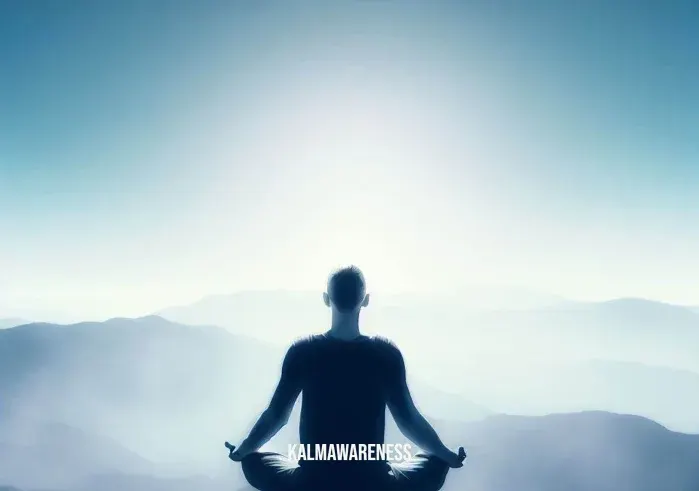
A Deeper Connection: Teaching Yoga Beyond the Poses
Welcome to the final chapter of our comprehensive guide on teaching yoga beyond the poses. Here, we dive into the principles of mindful teaching and explore unique ways to deepen your students’ yoga experience.
Instilling the Principles of Mindfulness in Teaching
Mindfulness is an integral part of yoga practice, transcending physical poses to encompass every aspect of life. Here are some methods to incorporate mindfulness into teaching yoga.
- Create a Mindful Environment: Establish an environment that encourages mindfulness and calm. Be it the soft glow of candles, the sound of a flowing stream, or a minimalist setting, an ambient environment can provide a soothing backdrop to a yoga class (meditation-sign).
- Incorporate Mindful Breathing: Teach your students the art of mindful breathing. It’s not just about inhaling and exhaling, but about being aware of every breath and its journey through the body.
- Promote a Mindful Lifestyle: Encourage students to carry the principles of mindfulness beyond the yoga mat, integrating them into their daily lives. Share resources about mindful eating, mindful communication, and mindful living.
As Thich Nhat Hanh, the well-known Zen master, aptly said, “Mindfulness is the energy that helps us recognize the conditions of happiness that are already present in our lives.”
Exploring the Connection between Yoga and Movement
Yoga is fundamentally about movement—fluid, intentional, and conscious. Here’s how you can explore the relationship between yoga and movement in your classes.
- Demonstrate the Flow: Yoga isn’t just about static poses. It’s about the flow from one pose to another, the transitions as important as the poses themselves (yoga-for-flexible-mind-and-body).
- Emphasize Body Awareness: Teach your students to tune into their bodies. Whether they’re in a pose or moving between poses, a deep sense of body awareness can transform their practice.
- Make Space for Dance: Dance can be an exciting way to explore the body’s potential for movement. Try incorporating simple dance movements in warm-up or cool-down sessions.
“The rhythm of the body, the melody of the mind, and the harmony of the soul create the symphony of life,” as said by B.K.S. Iyengar, emphasizes the integral role of movement in yoga.
The Role of Guided Meditation in Yoga Classes
Lastly, integrating guided meditation can profoundly deepen the yoga experience. Use these strategies:
- Start with Simple Techniques: Begin with simple meditation techniques, such as breath awareness or body scan meditation (mindful-movement-meditations).
- Incorporate in Savasana: The final relaxation pose, or Savasana, is the perfect time for guided meditation. It allows students to assimilate the benefits of their practice at a deeper level.
- Use Visual Imagery: Visual imagery can be powerful. Guiding students through a beautiful forest or along a serene beach can create a transformative meditation experience.
Remember, as Sri Chinmoy stated, “Meditation is the only way to grow and develop peace.”
With this chapter, we conclude our comprehensive guide on teaching yoga beyond the poses. We hope these insights inspire you on your journey as a yoga instructor, bringing a deeper, more meaningful experience to your students.
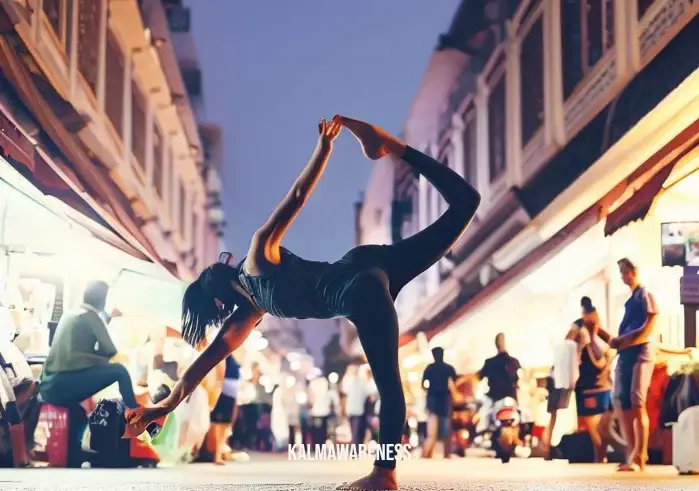
The Inner Journey: Teaching Yoga Beyond the Poses
Welcome to the last chapter of our exploration on teaching yoga beyond the poses. Here, we focus on the importance of teaching the inner journey of yoga, fostering a sense of community, and incorporating a holistic approach to yoga instruction.
Cultivating the Inner Journey
Teaching yoga is not just about instructing on physical forms but guiding students on a spiritual and emotional journey as well. Here are some ways to facilitate this process.
- Promote Self-Reflection: Encourage students to engage in self-reflection during their practice. This helps in developing self-awareness and connecting with their inner selves.
- Use Guided Imagery: Make use of guided meditations with visual imagery to aid students in their inner journey.
- Include Journaling: Incorporating journaling into your yoga class can allow students to reflect and process their experiences, thus deepening their inner journey.
As the famous spiritual teacher Osho stated, “Yoga is the journey of the self, through the self, to the self.”
Fostering a Sense of Community
Creating a sense of community in your yoga classes can foster a supportive and positive environment. Here’s how you can achieve this:
- Promote Open Communication: Encourage students to share their experiences, struggles, and breakthroughs. This open communication can create a supportive community within your yoga class.
- Organize Group Activities: Host group activities outside the yoga studio, such as a picnic or hiking trip. These can serve as opportunities for students to bond and foster friendships (meditation-chico-ca).
- Share Personal Experiences: Be open to sharing your own experiences with yoga. This can create a deeper connection with your students.
Incorporating a Holistic Approach
Emphasizing the holistic nature of yoga can enhance your teaching. Here’s how:
- Balance the Physical and Spiritual: While teaching poses is important, also stress on the spiritual aspects of yoga. This holistic approach can enrich your students’ experience.
- Include Breathing Exercises: Incorporate pranayama or breathing exercises into your classes. These techniques can help students focus their minds and energize their bodies.
- Teach Mindful Eating: Incorporate lessons on mindful eating and nutrition. This complements the holistic wellness approach of yoga (meditation-magazine-subscription).
The journey of teaching yoga beyond the poses is a rewarding one, and as you impart your wisdom, you also learn from your students. As T. Krishnamacharya beautifully put, “Yoga is an awareness, a type of knowing. Yoga will end in awareness. Yoga is arresting the fluctuations of the mind as said in the Yoga Sutras (cittavrtti nirodha). When the mind is without any movement, maybe for a quarter of an hour, or even quarter of a minute, you will realize that yoga is of the nature of infinite awareness, infinite knowing. There is no other object there.”
In conclusion, teaching yoga beyond the poses is a fulfilling and transformative journey that goes beyond the mat, encompassing all aspects of life. It is our hope that this guide has provided you with valuable insights and techniques to enrich your teaching and deepen your students’ yoga experience.
Remember, our journey together doesn’t stop here. You’re always welcome to revisit our guide, explore our magazine, and delve deeper into the world of mindful living. We wish you all the best on your continuing journey as a yoga teacher. Namaste.



